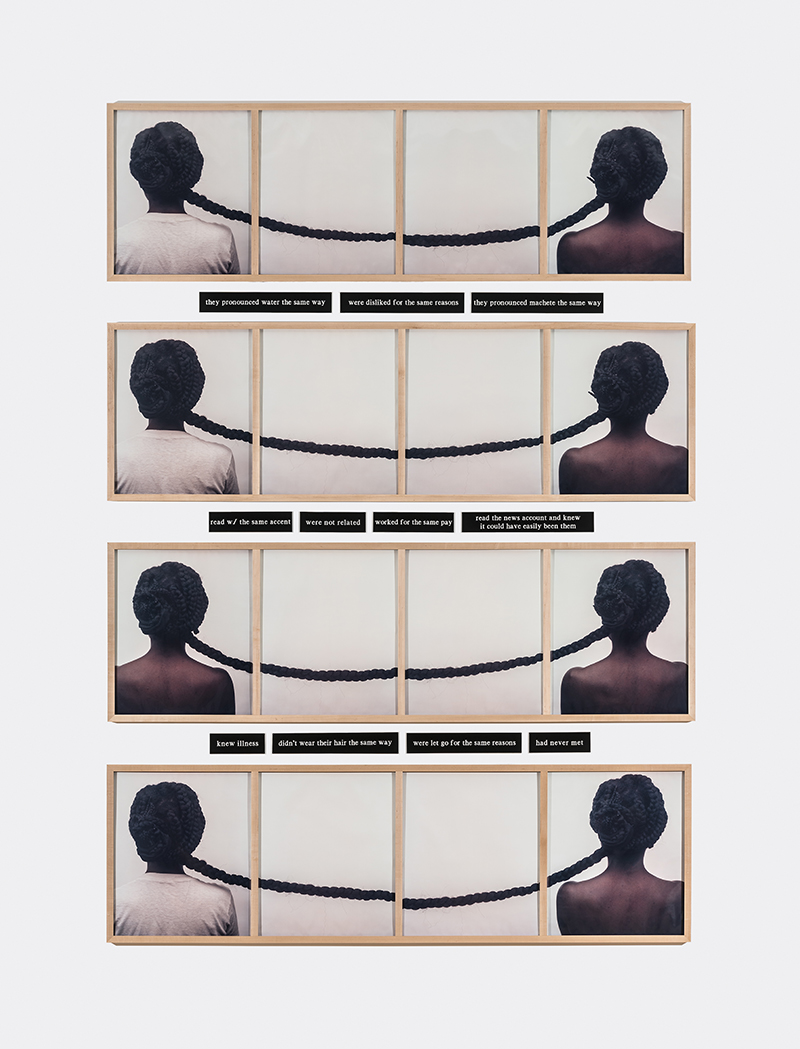Women photographers María Magdalena Campos-Pons and Lorna Simpson appear in new group exhibition in Louisville, Kentucky.
On 13th March 2020, a 26 year old African American woman, Breonna Taylor, was fatally shot in her apartment in Louisville, Kentucky. A former emergency medical technician, Breonna was killed by white plain clothes police officers who forced entry into her apartment. While news of her death took several months to reach mainstream attention, global protests eventually called for the world to ‘say her name’ – a reference to the #SayHerName campaign, originally launched in 2014 by the African American Policy Forum (AAPF) and Center for Intersectionality and Social Policy Studies (CISPS). Aiming to raise awareness of ‘the often invisible names and stories of Black women and girls who have been victimised by racist police violence, and [provide] support to their families’, the campaign shares an ethos with a new exhibition which opened this month at The Speed Art Museum, Louisville, Kentucky. Honouring Black lives lost prematurely, the featured artworks reflect on the life of Breonna Taylor, her killing in 2020, and the year of protests which erupted in Louisville in the wake of death, catalysing an international movement.
Promise, Witness, Remembrance is organised into three distinctive collections, a concept which emerged during a conversation between the exhibition’s curator Allison Glenn, and Tamika Palmer – Breonna’s mother – during the planning stages of the project. The first gallery, Promise, explores political ideologies via the potent symbols which underpin U.S. social and cultural discourse. Witness considers the present in terms of its past, featuring a myriad of artistic mediums to reflect incarnations of resistance across time and form. The culmination of the exhibition, Remembrance addresses gun violence and amplifies the legacies of victims of police brutality. The focal point of the exhibition, Amy Sherald’s iconic portrait Breonna Taylor (2020) – which was painted for the September 2020 cover of Vanity Fair – is here displayed publicly for the first time. Imbuing the image with vitality and strength, Amy enriched the painting with references to Breonna’s life – the vibrant blue palette, for example, echoes Breonna’s aquamarine birthstone. These details possess contextual resonance; the dress she wears, reminiscent ‘of Lady Justice’, evokes the need ‘to keep fighting for justice’ for Breonna (Sherald, Vanity Fair, 2020).
Photography is well represented in the exhibition. Contemporary Heroines María Magdalena Campos-Pons and Lorna Simpson appear amid the line-up of artists, contributing works from their comprehensive oeuvres. In Witness, Lorna’s Same (1991), sixteen colour Polaroids separated across four frames, depicts two women connected by a long braid. The work is annotated by eleven engraved plastic plaques which read like clippings from news accounts. The aesthetic composition and indeterminate textual fragments emphasise collective experience, illuminating elusive or even imaginary connections.
While the Remembrance gallery is ‘dimly lighted and sparsely hung’, precipitating a reverential atmosphere, María’s floral triptych Butterfly Eyes for Breonna Taylor generates a bloom of colour which merges traditional and digital media – a hallmark of her interdisciplinary practice. The flourishing arrangement orbits a cluster of dark, eyelike circles; while recalling the markings of butterfly wings, the shapes denote a sense of awareness and recognition.
According to Allison, the exhibition explores the convergence of personal and nationwide narratives, assessing the nature of Breonna’s death as part of the United States’ wider historical tapestry: “What happened to Breonna Taylor, and what has happened in Louisville over the last year, are part of a larger challenge in this country, an ongoing crisis of gun violence and police brutality. Many of the works in this exhibition speak to that crisis, past and present, both in Louisville and around the United States. But they also speak, on a more personal level, to how we honour the lives we’ve lost, and stand in solidarity with their loved ones”. The ability of art to ‘speak’, in perceptive and influential voices, exemplifies its pivotal role in capturing, defining, and transforming social consciousness. As campaigns for reform gather pace, the visual arts will remain a vital element of the story. Creating space for diverse communities to express their own experiences is a responsibility cultural institutions must meet; exhibitions such as Promise, Witness, Remembrance are leading the way.
By Katherine Riley
Alongside a programme of related community events, Promise, Witness, Remembrance will be on display at The Speed Art Museum in Louisville, KY, from 7th April – 6th June 2021.














